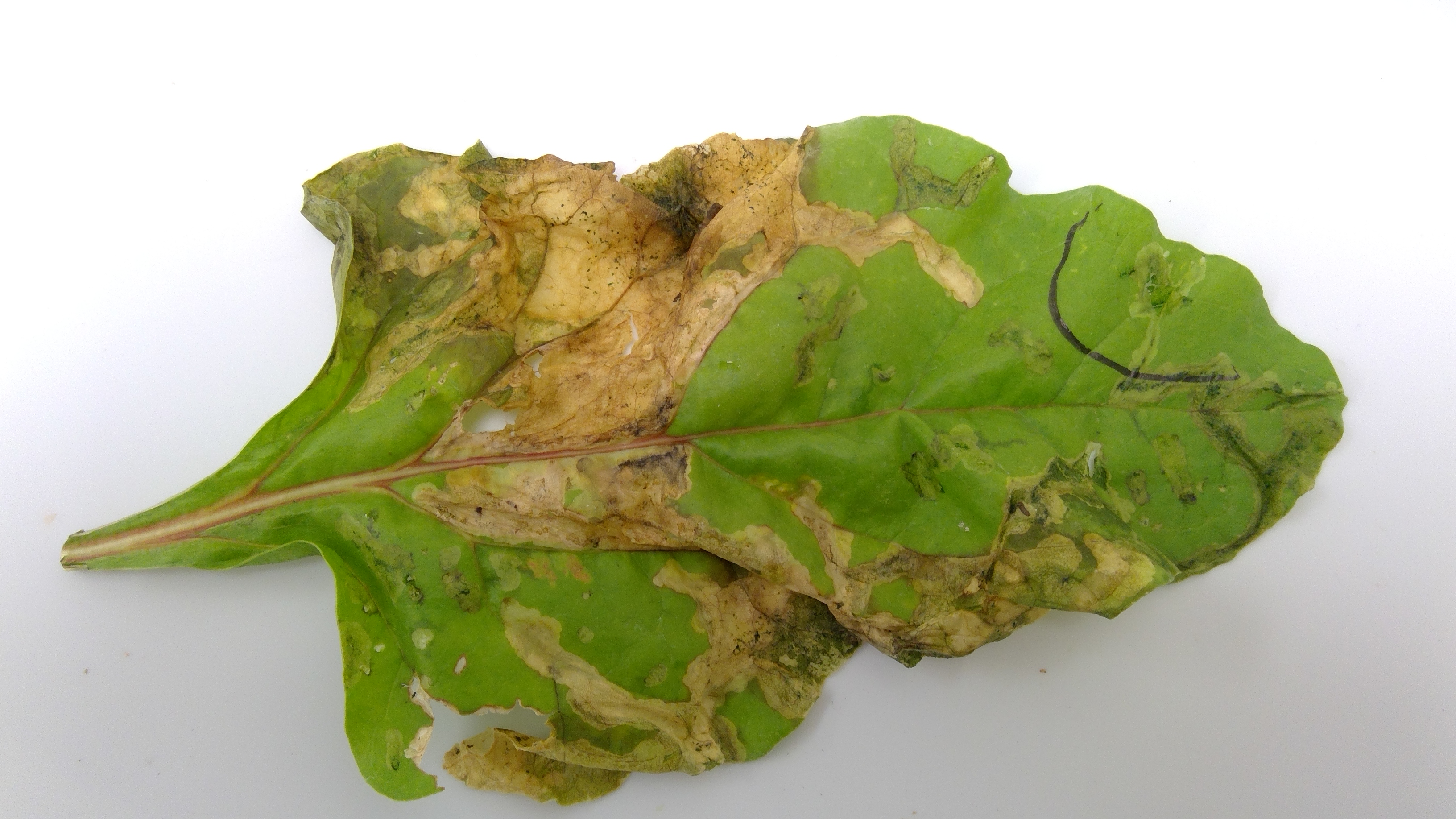Spinach Leafminer (Pegomya hyoscyami)
Hosts:

Fig. 1: Leafminer damage. Photo by L. Kerzicnik
Beets, swiss chard, spinach Description/Biology: Most of the damage (Fig. 1) is during the cooler season and activity stops about mid-summer.
Life Cycle:
The insect overwinters in the pupal stage (stage before adulthood) in the soil underneath infested plants in the leaf litter. The adults emerge in mid-spring and they lay masses of white eggs on the undersides of older leaves. The larvae or immatures hatch from the eggs, feed for about two to three weeks, drop to the ground to pupate, and emerge as adults. There could be several generations throughout the season.
Management:
Non-chemical control: Inspect and remove the infested leaves when you see them. Smash the eggs on the surface before the eggs hatch and begin tunneling. If the larvae have already tunneled, cut them off completely and discard them far from your garden site. You can also use floating row covers, cheesecloth, or other types of screening to prevent the adults from laying eggs on the underside of the leaves. Since there are several generations and the flies pupate in the soil, continually inspect the soil, remove leaf litter below the plants, and look for pupae (should look like little cocoons).
Chemical control:
Chemical controls are an option. However, several applications of insecticides would be needed to target the adult flies on the leaves. A product with the active ingredients azadirachtin or spinosad can kill the larvae but usually, after feeding, the damage is done.
Further information:
To learn more about the topics discussed on this page, contact the Schutter Diagnostic Lab. If you suspect an infestation on your property, contact your local extension agent, the Schutter Diagnostic Lab at Montana State University, or the Montana Department of Agriculture.
This December 2022 fact sheet is also available as a Printable PDF (110KB).
Disclaimer: These recommendations are provided only as a guide. It is always the pesticide applicator’s responsibility, by law, to read and follow all current label directions for the specific pesticide being used. The authors and Montana State University assume no liability resulting from the use of these recommendations. The Montana State University Extension Service is an ADA/EO/AA/Veteran’s Preference Employer and Provider of Educational Outreach.
